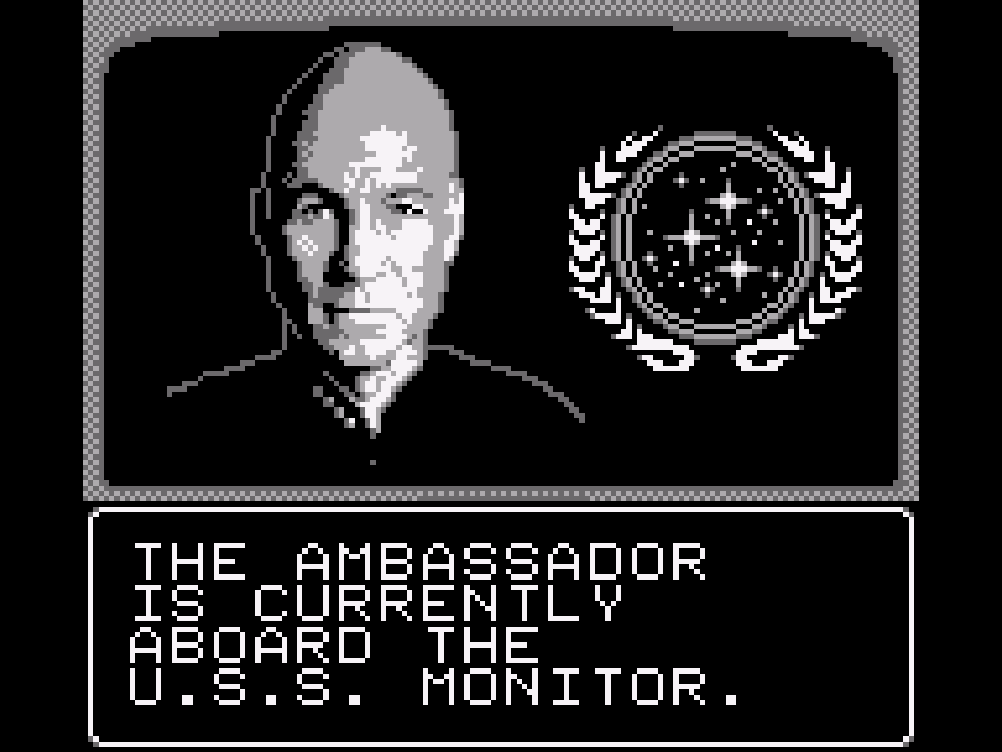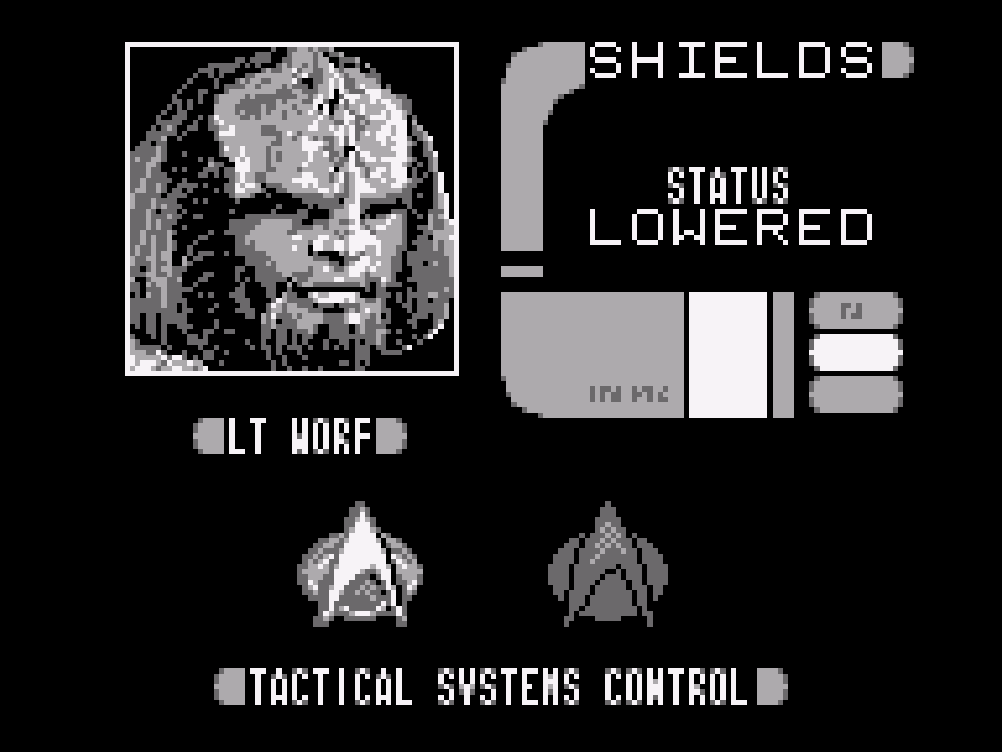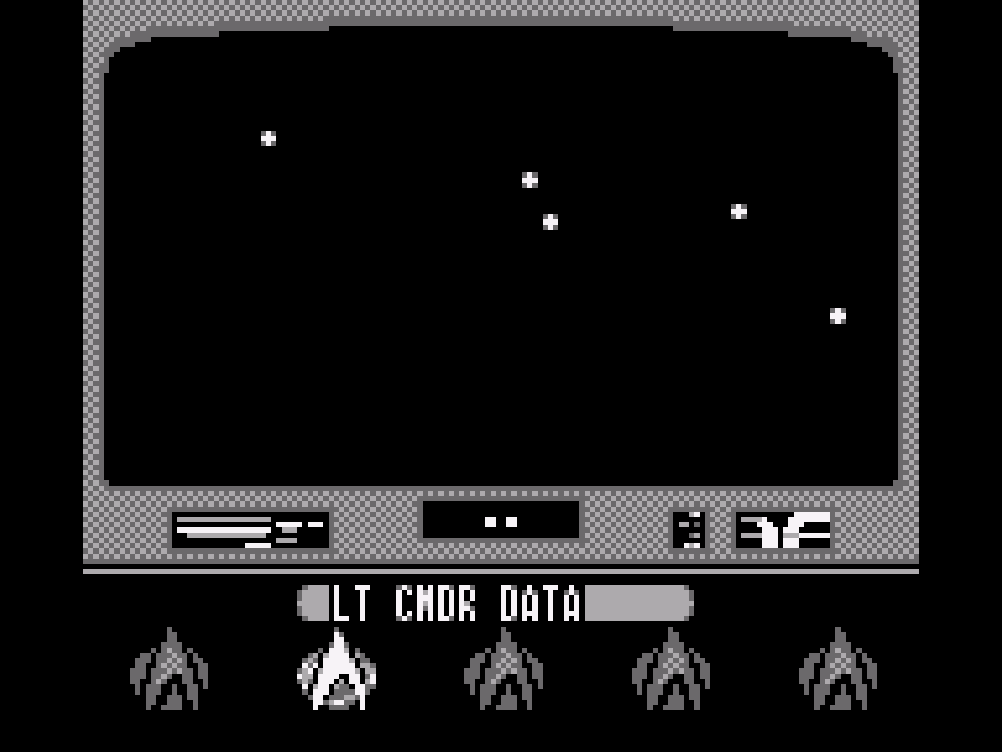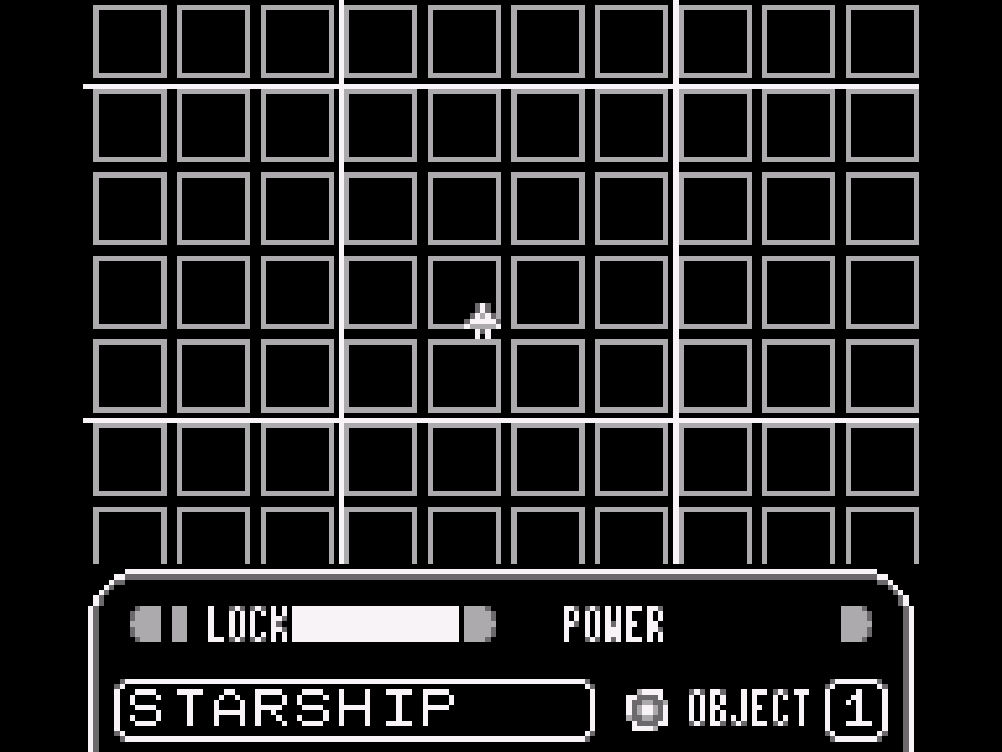‘Engage’, a single word that scores of Star Trek fans from 1987 through to 1994 would kill to say. Absolute Entertainment gave them a chance in 1993 with their release of Star Trek: The Next Generation on Game Boy. Taking the place of Captain Picard, you as a Starfleet Cadet must complete simulated missions. Rank up through the game and find more difficult situations to challenge your command.
Gameplay – core idea of the game
This is one of those games that you must use every button available and yes, this includes Start and Select. It’s important you know this, especially if you emulate, due to the Game Boy having a great button layout. Select allows you to change between Bridge and Battle controls while A and B perform actions. Start is pause because, of course it is.
Starting every mission, Captain Picard fills you in on what you need to do. Missions can range from ‘save xyz from a disaster’ through to ‘battling the Borg’. Your job is pretty simple, disseminate the key points from Picards briefing and hoof it to the system he mentions.

Commanding the bridge is one half of the game, ensuring you choose each bridge officer when you need them. Data is at the helm and provides you the ability to navigate and travel to star systems. Worf grants you access to both tactical and defensive systems on the Enterprise. Chief O’Brien does everything a transporter chief would (not much in this game). Additionally we have Geordie who is busy down in engineering but is happy to give you ship statuses and divert power to other systems. Finally, we have Riker who just tells you how you’re doing.
Gameplay – the actual game
For the most part, you’re going to want to go straight to Data, choose the system and set it to maximum Warp. This powers you across the quadrant but NOT to the exact position you would expect. Here lays the problem with the game: nothing is explained in a satisfactory manner. The writers of the Star Trek The Next Generation manual stopped short at telling you everything you need to know. For instance, once you arrive in the system you need to go to battle controls. Why the battle controls? To allow you move your ship at impulse while checking a map (the Start button) and watching for the planet / object.

Everything after this point becomes a mini game. Beaming up some is a game of Marco Polo and entering orbit is akin to Superman 64s ring system. If you need Geordie to give you more power to shields (for example), you play yet another mini game. Albeit a clever idea, succeeding in the mini game is useless if you accidentally (let’s say) drop shields that you just powered up. Turning them back on and that power boost is now gone, waiting for the game to be played again.
Finally we have the battles and these were my favourite part of the game. Jumping in to Battle command, you move the viewer around the screen while pumping out torpedos and phaser fire. Torpedos don’t lock on making them fire and forget, phasers are considerably more forgiving.
Graphics
Certainly a lot of thought went in to the graphics of Star Trek The Next Generation. Digitising the main characters was a great move and surprisingly, look pretty good on the limited Game Boy screen. I have always had a fondness for LCARS, the minimal amount in the game looks good but not wonderful. Undeniably, the bridge is the worst looking part of the game. A lacklustre view screen and poor effects really disappoint the eyes.

The mini games vary in their design but alas, they don’t fair much better than everything else. The sprites used in battles are easily identifiable and look the part. On the negative side, we have the transporter game which looks terrible. Being fair to the developers, I don’t know what I would have done to translate this task in to an enjoyable Game Boy game.

Sound
Unremarkable and it’s not to do with the limited speaker and low bit count. It’s important to realise that sound can kill or make a game, in this case it does neither repairs or adds damage. Scoring three stars was the least I could do due to excellent rendition of The Next Generation theme.
Final thoughts on Star Trek The Next Generation
The game is an ambitious attempt to bring the classic series to a small handheld portable. Balanced against all the negatives above, the game successfully transports you to bridge of the Enterprise D. I found myself playing 15 minute spells, just to order around the bridge crew and perform menial tasks. You might not get a battle every 5 minutes but it does genuinely feel like an episode. Missions are mostly the same with different races and systems substituted – you aren’t going to dedicate a long gaming session to this. If you can find it cheap (or emulate it) and are a fan of the show, definitely give it a play.
You can find more of our gaming posts, including Retrospectives here.
Want to buy this game, check out the eBay listings here.
